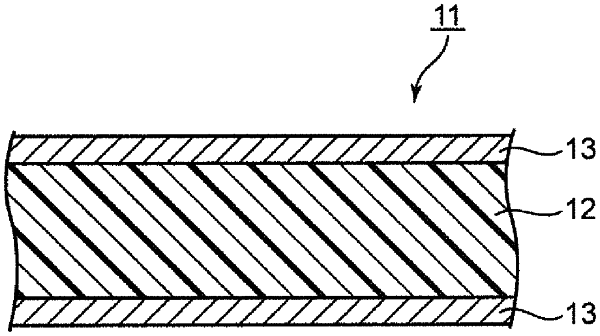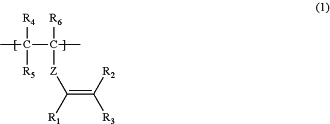| CPC B32B 15/20 (2013.01) [B32B 15/082 (2013.01)] | 12 Claims |

|
1. A copper-clad laminate comprising:
an insulating layer; and
a copper foil existing to be in contact with at least one surface of the insulating layer,
wherein the insulating layer contains a cured product of a resin composition containing a polymer having a structural unit represented by the following Formula (1) in a molecule, the copper foil having a layer treated with a silane coupling agent having an amino group in the molecule as a silane coupling agent layer,
a chromium element amount, on an exposed surface on which the insulating layer is exposed by an etching treatment of the copper-clad laminate with a copper chloride solution, measured by X-ray photoelectron spectroscopy is 7.5 at % or less with respect to a total element amount measured by X-ray photoelectron spectroscopy, and
a surface roughness of the exposed surface is 1.1 μm or less in terms of ten-point average roughness, and wherein a thickness of the silane coupling agent layer is sufficient to cause a nitrogen element amount, on the exposed surface, measured by X-ray photoelectron spectroscopy to be 1.0 at % to 5.0 at % with respect to a total element amount measured by X-ray photoelectron spectroscopy:
 wherein in Formula (1), Z represents an arylene group, R1 to R3 each independently represent a hydrogen atom or an alkyl group, and R4 to R6 each independently represent a hydrogen atom or an alkyl group having 1 to 6 carbon atoms.
|